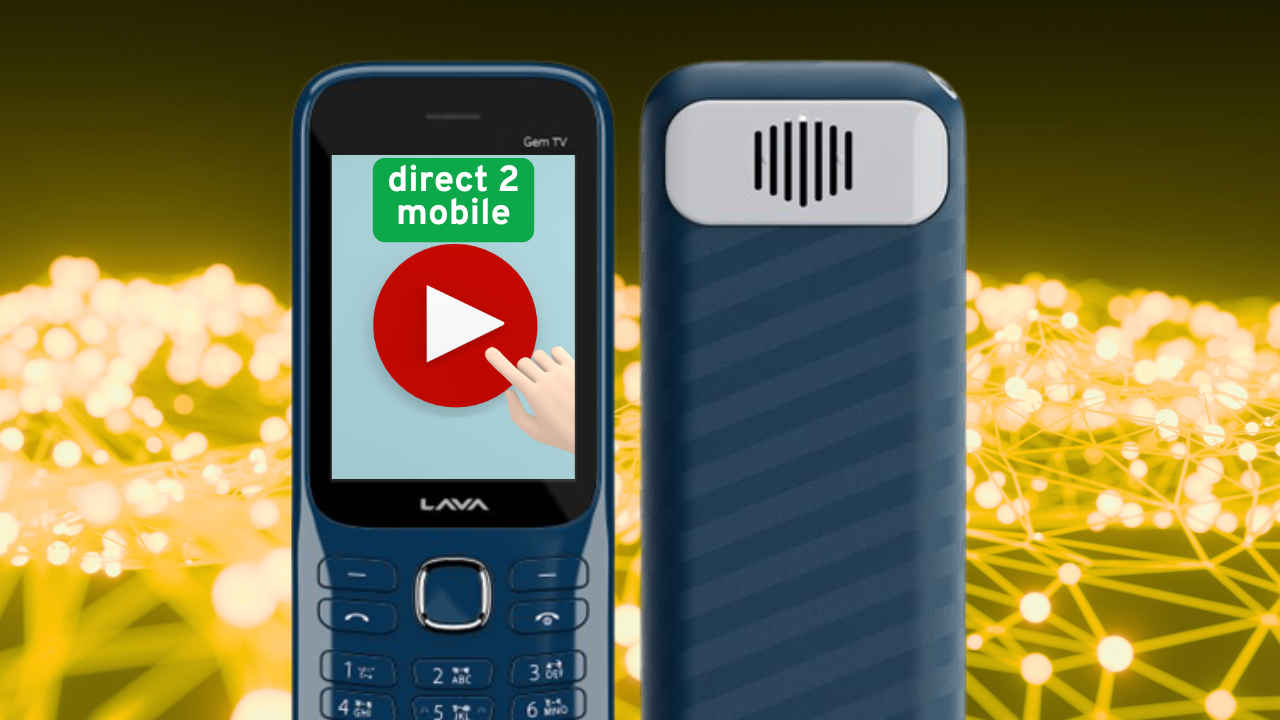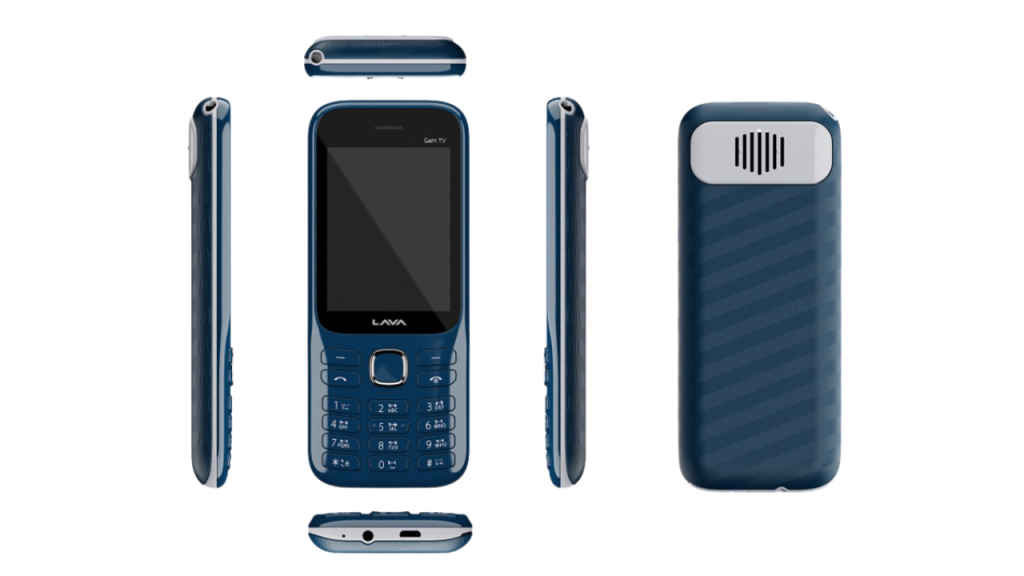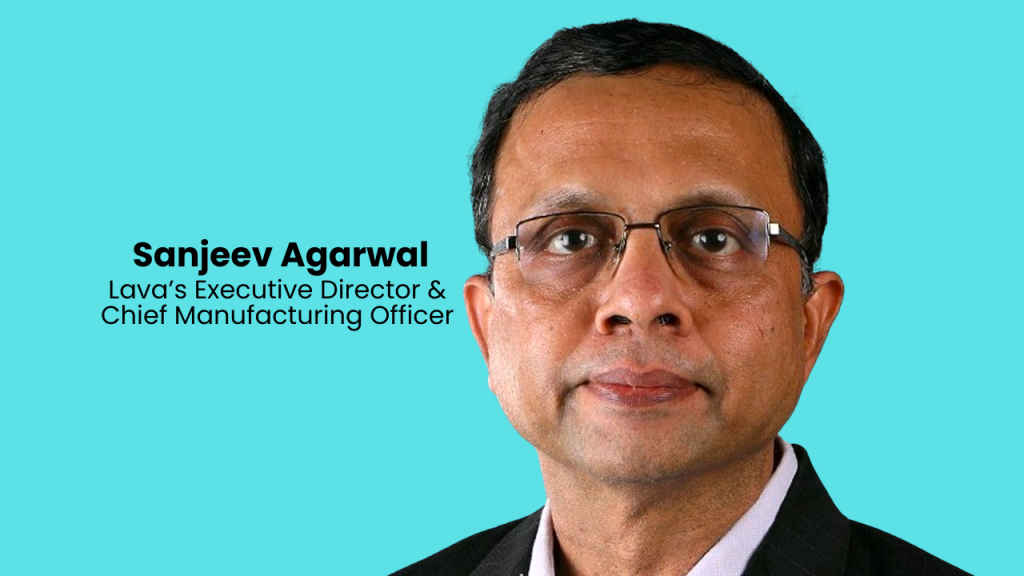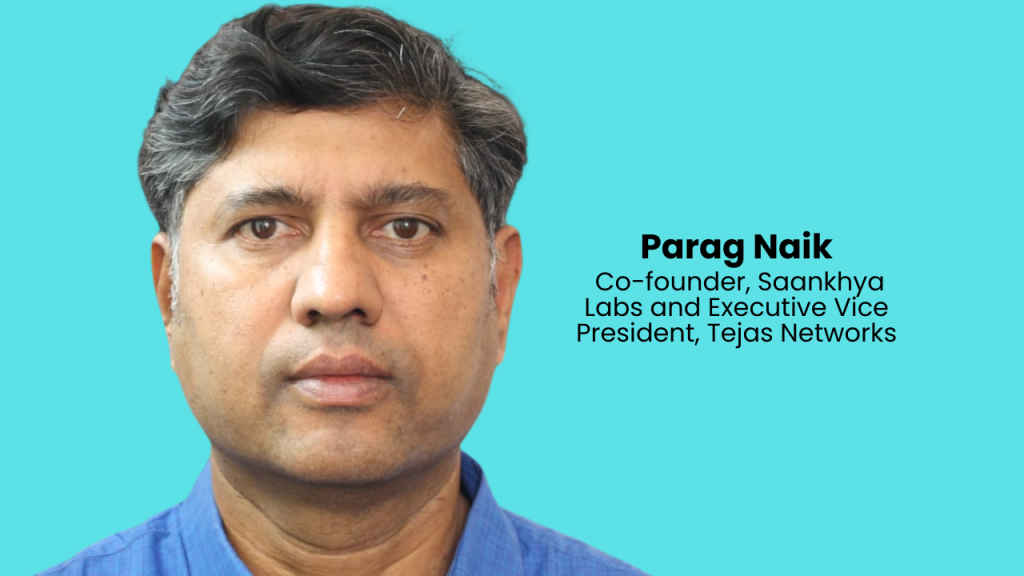Broadcast Revolution: How India’s First D2M Phone Aims To Redefine Mobile Reach

When Lava and Tejas Networks unveiled India’s first Direct-to-Mobile (D2M) feature phone, they weren’t simply launching another budget handset – they were lighting the fuse on a telecommunications revolution. Imagine nearly half a billion Indians – some still tethered to 2G, many beyond reliable data coverage – suddenly able to watch live TV, receive educational programs, and get critical emergency alerts directly to their pockets, all without spending a rupee on mobile data.
 Survey
SurveyWith over 400 million feature-phone users in rural and remote regions, the potential impact is staggering: D2M leverages terrestrial broadcast airwaves in the UHF band to beam video, audio, and text straight to a dedicated TV tuner chip inside the phone. This isn’t incremental evolution – it’s a seismic leap toward truly universal infotainment and public safety messaging.
Also read: HMD and Lava to launch phones with direct to mobile technology: What is it and how it works
In case you’re still wondering what’s D2M, well let me break it down a bit more. Direct-to-Mobile (D2M) technology is a broadcasting system that enables users to receive multimedia content, such as video and audio, directly on their mobile devices via broadcast signals, eliminating the need for an internet connection or data plan. This D2M technology, currently being explored in India by the Department of Telecommunications (DoT) and Prasar Bharati is anticipated to be commercially available in 2025.
D2M presents a significant advantage for Indian telecom providers like Airtel, BSNL, Jio and Vi by offloading a substantial amount of video and audio traffic from their congested cellular networks, thereby freeing up valuable spectrum and reducing the infrastructure burden associated with transmitting high-bandwidth content. This allows them to allocate their network resources more efficiently for other data services and potentially offer more competitive data plans, as users won’t be consuming their mobile data for broadcast content. A win-win like no other!

At a buzzing press event in Mumbai, I sat down with Lava’s Executive Director & Chief Manufacturing Officer Sanjeev Agarwal and Parag Naik, co-founder of erstwhile Saankhya Labs and Executive Vice President, Tejas Networks’ visionary co-founder to unpack the journey behind this breakthrough.
From Saankhya Labs’ SL3000 software-defined radio chipset to MediaTek’s rock-solid MT6261 SoC, the collaboration marries indigenous semiconductor prowess with mass-market manufacturing muscle. Together, they’ve squeezed terrestrial digital broadcasting into a sub-250 MHz, 4 MB-RAM footprint – an engineering feat that outshines many global efforts demanding far heftier hardware.
As you’re about to read in their own words, D2M’s power lies not just in the tech itself, but in its promise to ease network congestion, bridge the digital divide, and propel India from “assemble in India” to “invent in India.” Dive in, because what follows is the verbatim story of how this game-changing device came to life – and why it matters to every corner of our country.
Q1. What inspired Lava to pursue this path that led to India’s first D2M feature phone?
Sanjeev: As an Indian smartphone and electronics manufacturer with in-house design and R&D labs, Lava has been at the forefront of innovation, aligned with government initiatives at both the central and state levels, empowering the masses with a better quality of life through digital innovations. The integration of D2M (Direct-to-Mobile) technology into feature phones marks a significant breakthrough, poised to transform content consumption patterns. When Tejas developed the chip, our R&D team at Lava moved swiftly to integrate it into our feature phones, reflecting our commitment to driving digital inclusion.
Also read: India 5G Spectrum Explained: Why 700MHz Band Matters For Best 5G Coverage
In India, digital connectivity is still out of reach for a substantial portion of the population, particularly in rural and remote areas where mobile internet is either unaffordable or unavailable.
The D2M-enabled feature phone extends this reach by leveraging terrestrial broadcasting, enabling users to access live TV, educational content, and emergency alerts without relying on mobile data or Wi-Fi. This innovation represents a transformative step towards accessible infotainment and public service communication, perfectly aligning with Prime Minister Narendra Modi’s vision of a ‘Digital India’ and an ‘Atmanirbhar Bharat’ – a future where technological empowerment touches every citizen
Q2. How did the partnership with Saankhya Labs and the use of MediaTek chipsets come together? What were some of the challenges, breakthroughs, and differentiators versus global counterparts?
Parag: The development of this D2M-enabled feature phone was a result of strategic synergy between Lava’s R&D capabilities, Saankhya Labs’ (a Tejas Networks company) indigenous semiconductor innovation, and the robust reliability of MediaTek’s mobile platforms. Saankhya Labs has long been at the forefront of software-defined radio (SDR) technologies in India, and their SL3000 chipset, designed to receive terrestrial digital broadcasts, was pivotal in bringing D2M to life in a mobile form factor.

The choice of MediaTek’s MT6261 SoC provided a dependable baseband platform. Marrying the broadcast capabilities of SL3000 with the MT6261 required a deep integration effort across hardware and software layers, handled jointly by Lava’s in-house R&D team and engineers from Tejas. The software is designed to operate on devices with less than a 250 MHz single-core processor and just 4MB RAM/4MB Flash storage. This optimization ensures smooth functionality even on resource-limited devices, differentiating the solution from global counterparts that often demand more computational power and memory.
While global competitors may focus on high-end smartphones, this partnership prioritizes bringing D2M technology to feature phones & entry level smartphones, ensuring wider accessibility and bridging the digital divide. By focusing on lightweight processing and seamless integration, Saankhya Labs, Lava and MediaTek have carved out a unique position in the evolving mobile media landscape.
Q3. How exactly does D2M enable infotainment and emergency alerts without a data connection?
Parag: D2M uses terrestrial broadcast airwaves (in the UHF band 470–582 MHz) to transmit audio-visual and text content directly to mobile devices. It functions like a digital TV broadcast but optimized for mobile reception through a dedicated UHF antenna and Saankhya’s SL3000 receiver chip. This means the phone can receive live TV, OTT video, educational content, or government-issued alerts, without any dependency on the internet. The technology also allows targeted content delivery and emergency alerts even during internet blackouts or cellular network failures, making it crucial for public safety and disaster communication.
Q4. What does this mean for the 400–500 million Indians still on 2G or outside the digital mainstream?
Parag: Nearly half a billion Indians still rely on 2G networks, primarily because the cost of mobile data remains out of sync with their income levels. For service providers, delivering data services at such low price points is economically unviable. D2M offers a compelling solution, enabling the delivery of curated video content (similar to YouTube) and other data services to these users at a price point that is both affordable for consumers and sustainable for providers.

Sanjeev: The inclusion of Lava’s own accessibility-first features, like the BOL (text-to-speech) system and UPI integration in feature phones, complements D2M by enhancing user experience for seniors, the visually impaired, and first-time digital users. Together, these innovations mark a pivotal moment in India’s journey toward inclusive, equitable technology access.
Q5. What does Lava see as the long-term play for D2M in easing mobile network loads and enhancing reach?
Sanjeev: D2M has far-reaching implications beyond just delivering content without the internet. At a systemic level, it offers a complementary pathway to reduce congestion on cellular networks, particularly in an era where video content accounts for the majority of the mobile data traffic. As smartphones become ubiquitous and content consumption surges, telecom operators are increasingly challenged to meet bandwidth demands economically.
By offloading high-data-use applications like live streaming, firmware updates, and even software patches onto a broadcast channel, D2M helps unburden cellular networks. It functions like a parallel pipeline, efficient, scalable, and spectrum-friendly. Lava envisions this technology becoming integral to India’s future content delivery infrastructure, especially in hybrid 5G-broadcast environments.
Q6. What does this innovation say about India’s ambition to become a product IP and manufacturing hub, not just an assembly base?
Sanjeev: The D2M-enabled feature phone is a defining symbol of India’s maturing innovation ecosystem. It reflects a broader national ambition: to not only assemble products for global brands but to ideate, design, and commercialize original technologies that solve India-specific challenges. From the chipset level to the software interface, and from industrial design to integration testing, every layer of this project has been led by Indian engineering and manufacturing.
This is not a mere adaptation of existing foreign technologies but a true case of indigenous innovation with export potential. It showcases the capabilities of India’s semiconductor and electronics ecosystem, exemplified by Saankhya Labs, MediaTek India, and Lava’s own R&D team. It also demonstrates our readiness to lead in the global conversation on convergence technologies, especially where 5G, broadcasting, and public service delivery intersect.
By launching this product in India first, and developing the entire supply chain domestically, we are helping redefine India’s role from being a low-cost manufacturing destination to a cradle of deep-tech innovation. It is a resounding statement that India is ready not just to make in India, but to invent in India.
Also read: WAVES 2025: Top 3 bold predictions from YouTube, Adobe, Mukesh Ambani
Jayesh Shinde
Executive Editor at Digit. Technology journalist since Jan 2008, with stints at Indiatimes.com and PCWorld.in. Enthusiastic dad, reluctant traveler, weekend gamer, LOTR nerd, pseudo bon vivant. View Full Profile